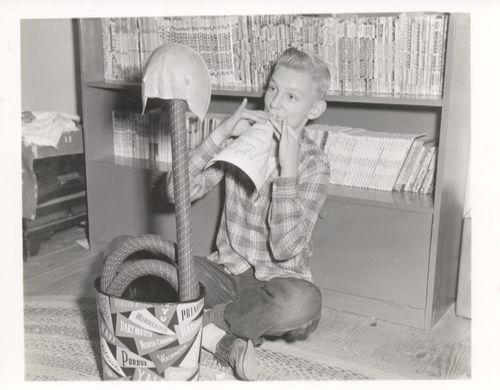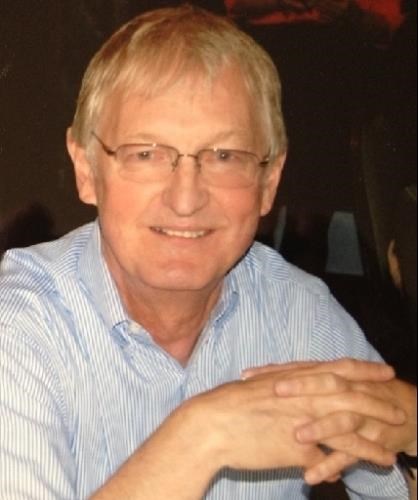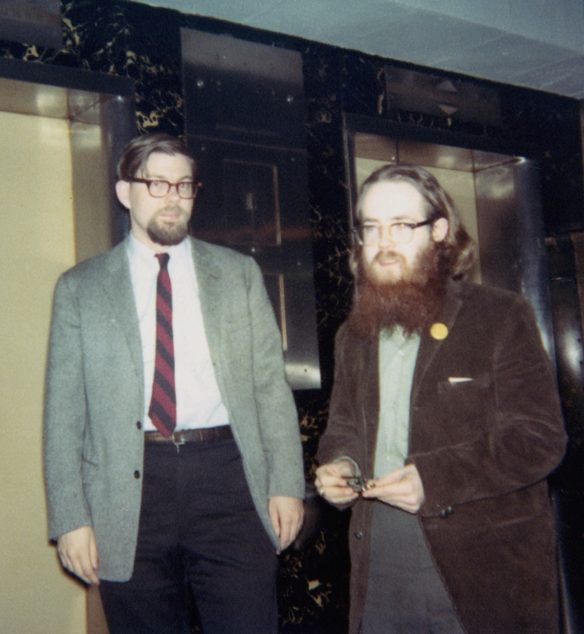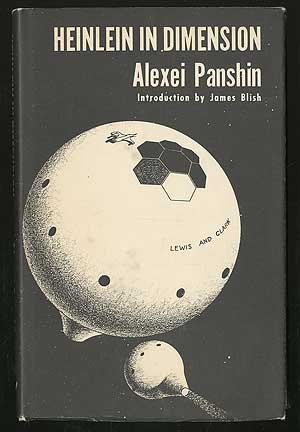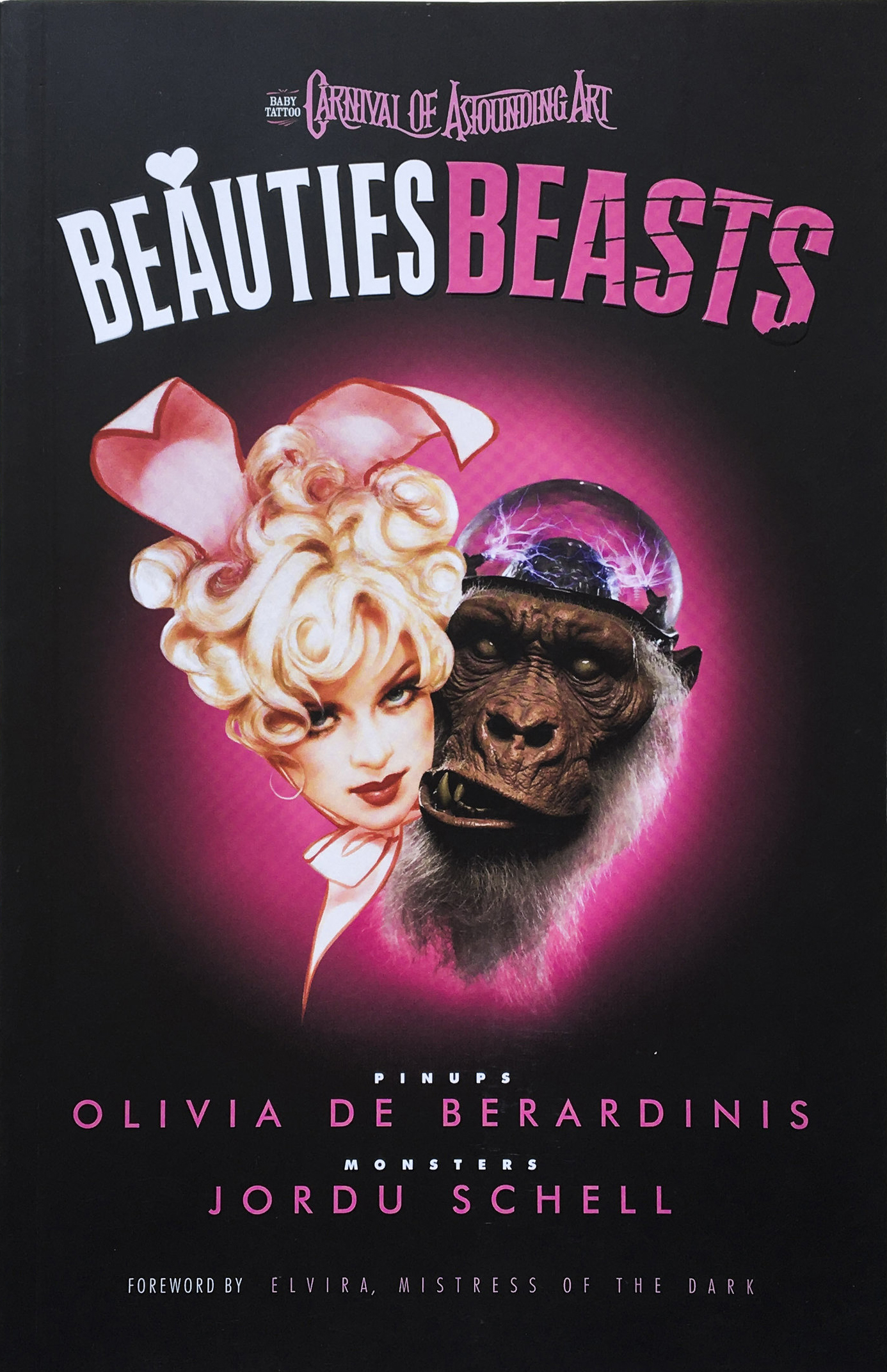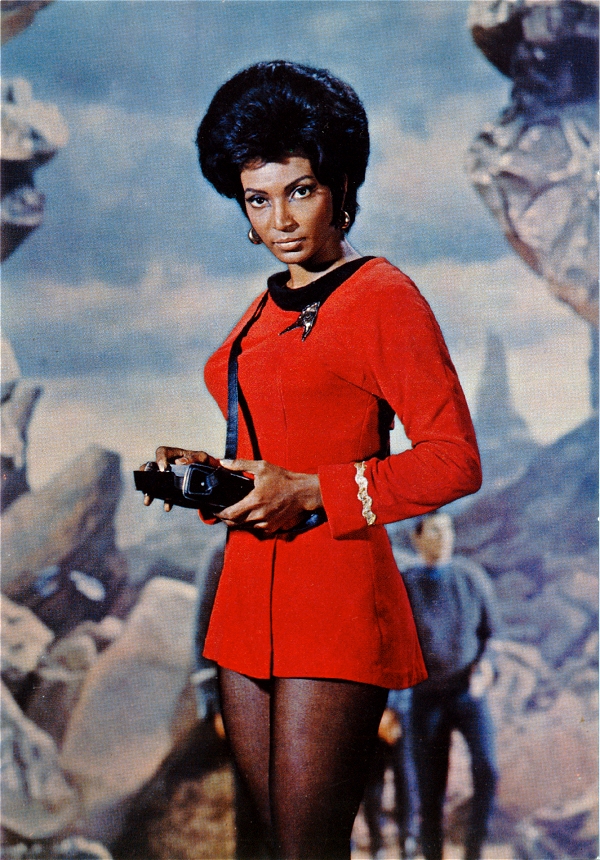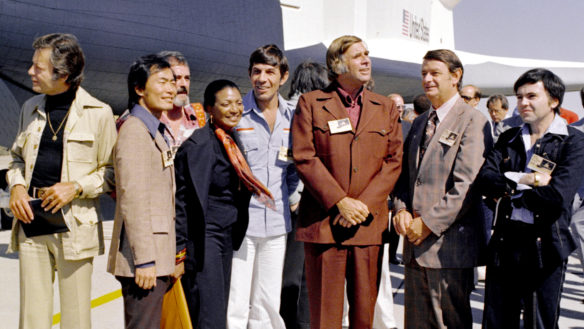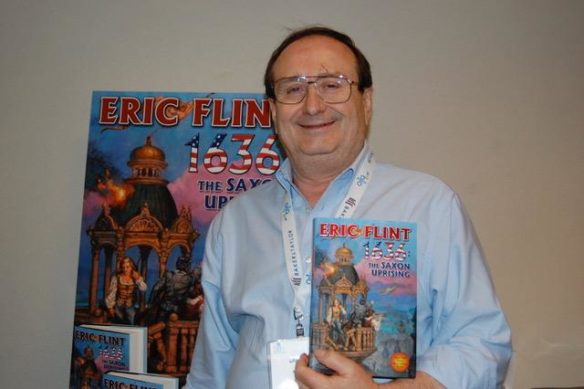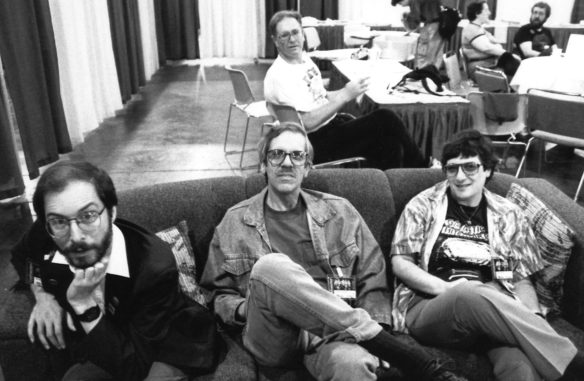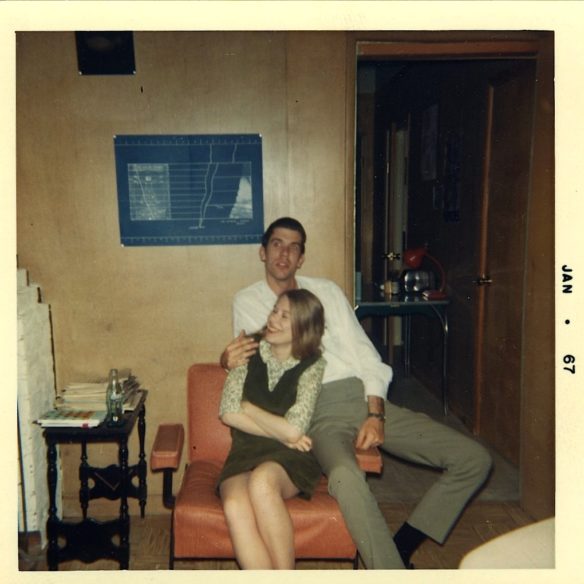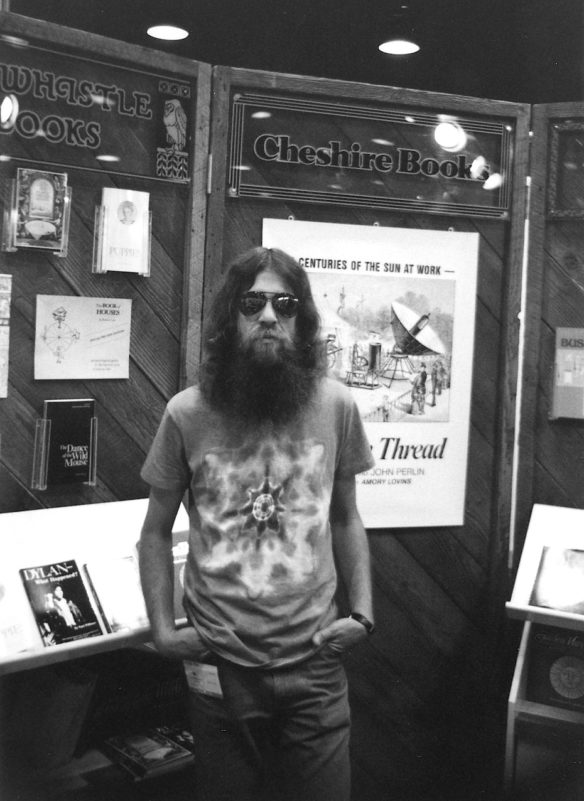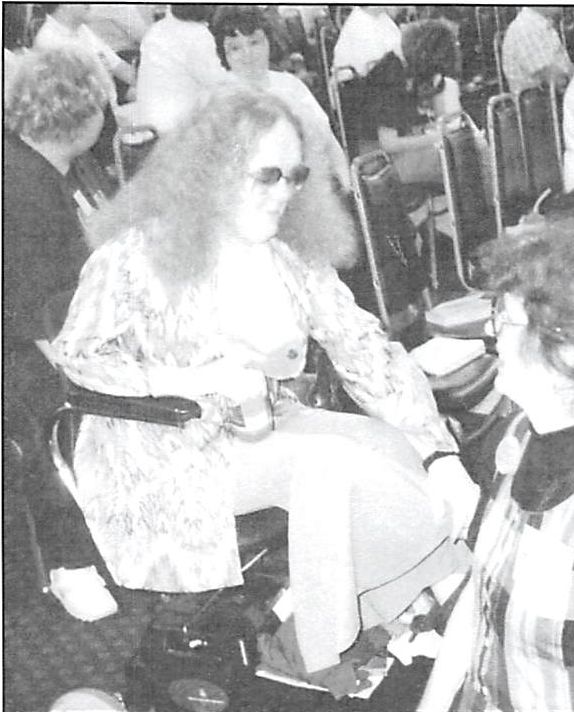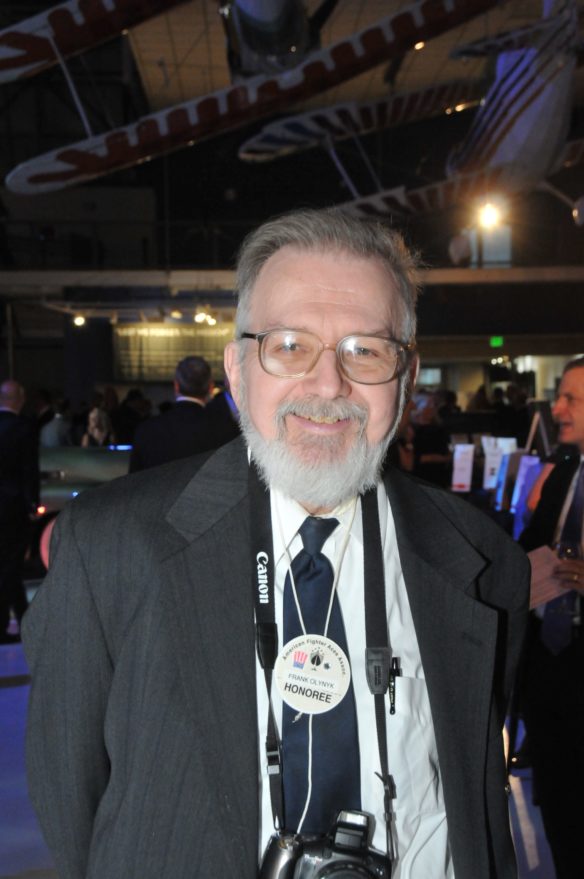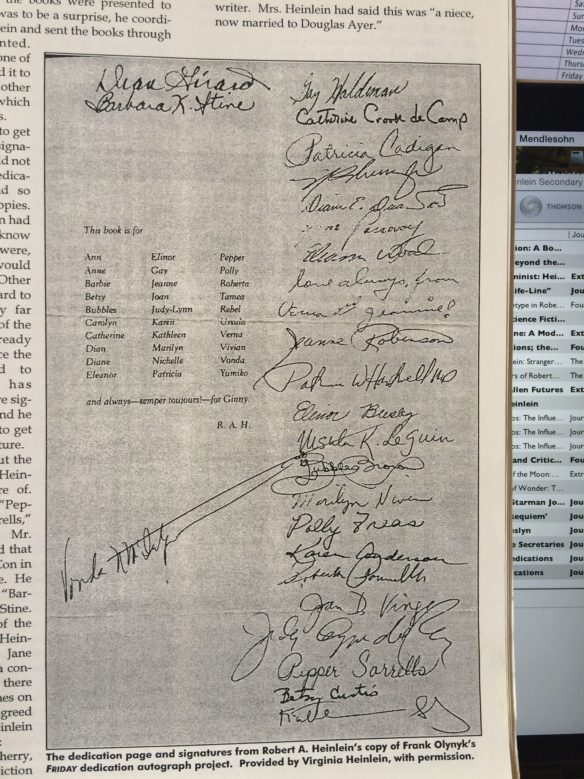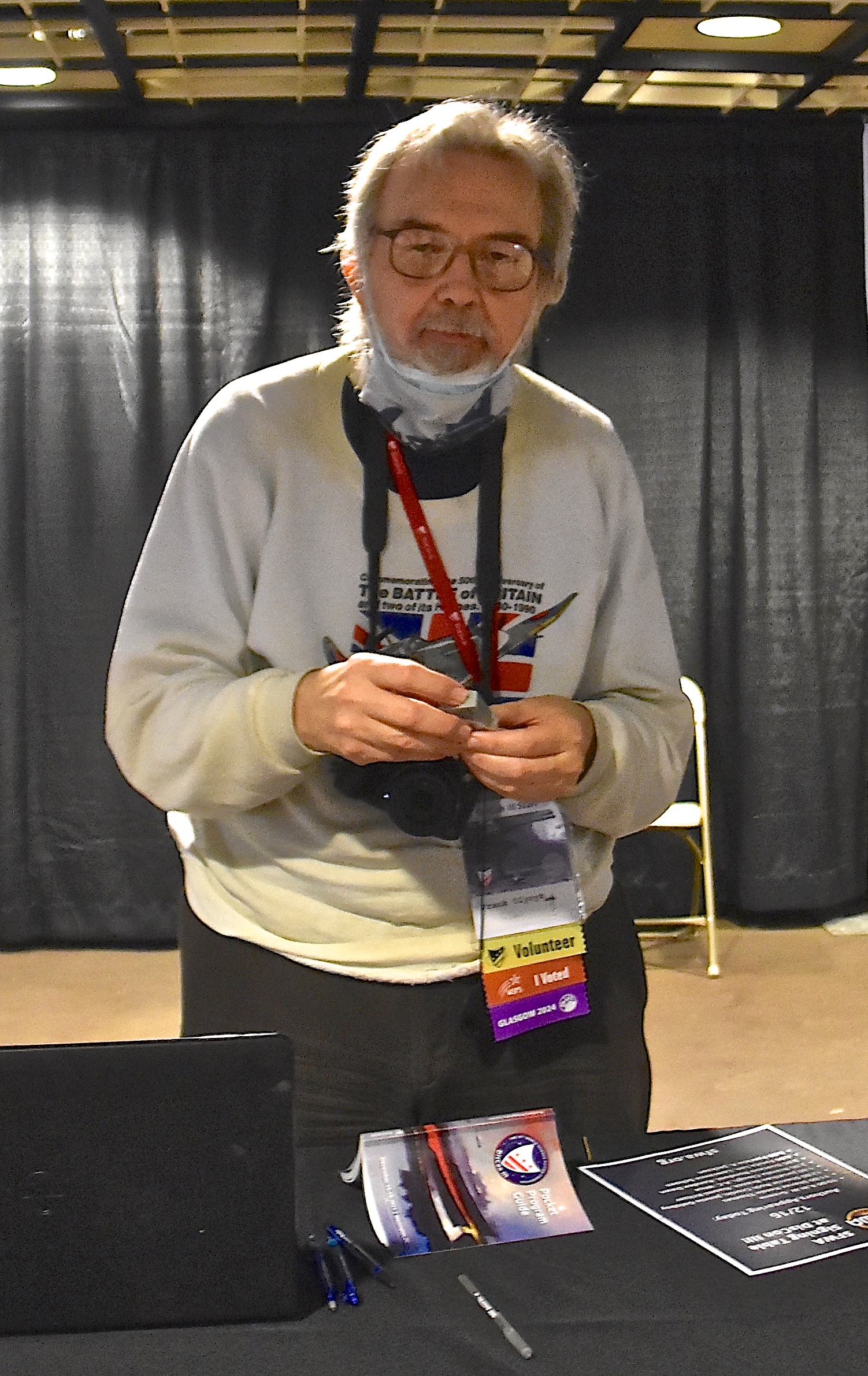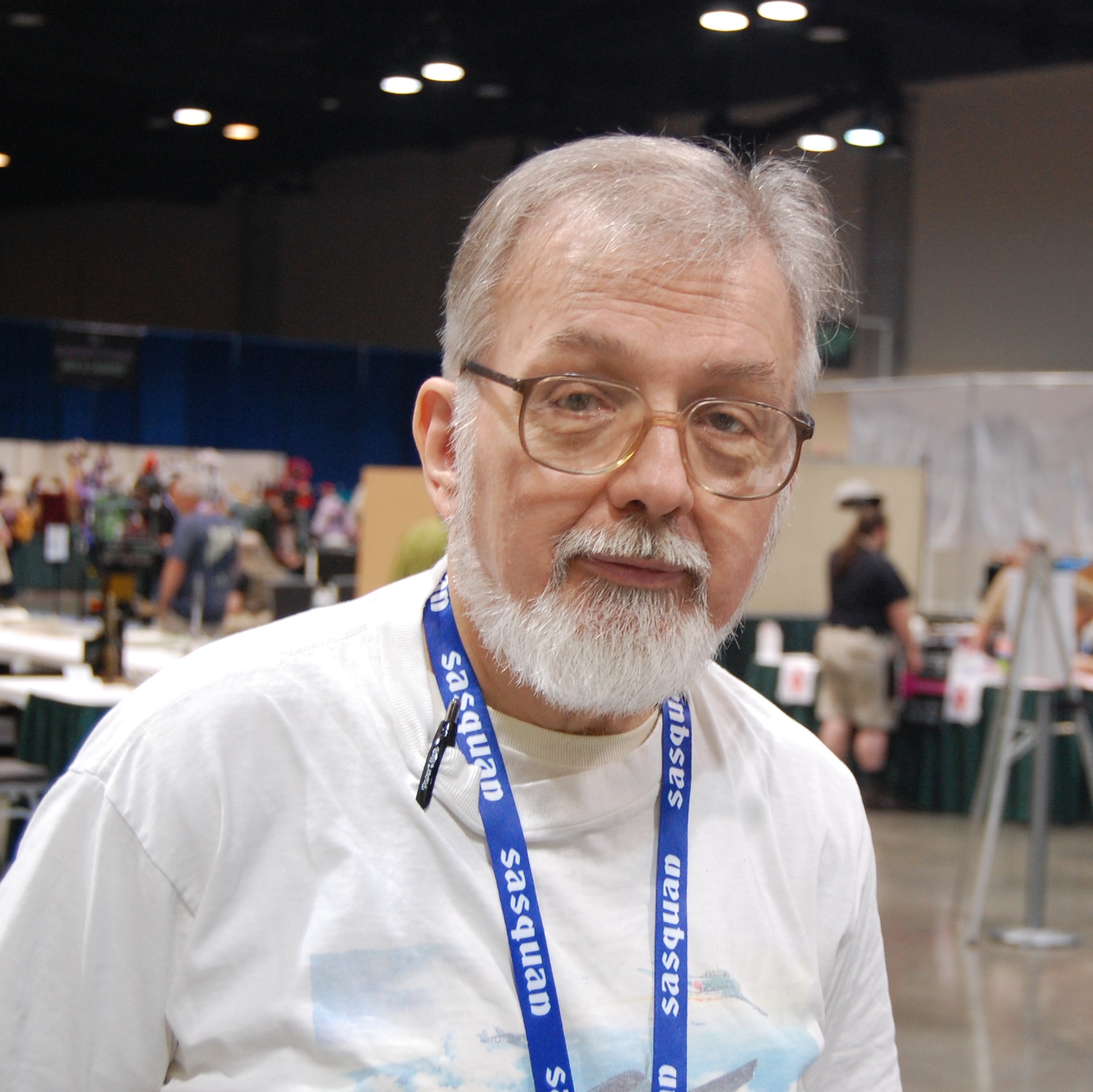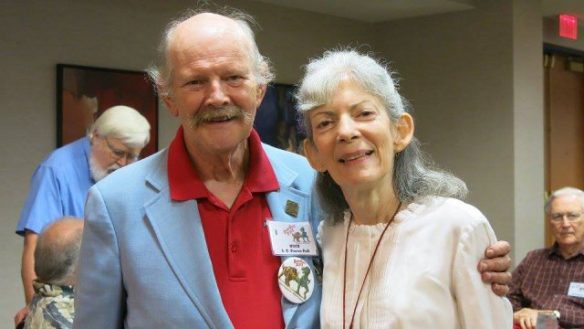
By Martin Morse Wooster: J.G. “Huck” Huckenpöhler, a long-time fan and official in the Burroughs Bibliophiles, died on August 26 in Washington, D.C. He was 81.
Huck worked for the National Science Foundation as a science resources analyst between 1964-1996, compiling reports about the numbers of people getting different kinds of scientific degrees. He later monitored three long-term contracts the NSF had with three universities.
He was one of the most serene fans I have known. I never heard him complain about anything, not even routine aches and pains. His happiness derived from his strong and enduring 57-year marriage to his wife, Victoria, and from his love of fiction, particularly the works of Edgar Rice Burroughs.
Huck had many hobbies. He loved German culture, including the novels of Karl May and German beer. He had a deep appreciation of German operettas and knew all the composers most people know and many that were obscure.
He loved military history and earned a Ph.D. in history from George Washington University on an 1866 battle between Prussia and Austria where the winning Prussian general was an observer at the battle of Gettysburg and adapted strategies from victorious Union generals. In 1991 the Washington Post interviewed him about the Gulf War, which he said “has gone so much better” than U.S. efforts in World War II and Korea.
Huck also had a substantial Spanish-language stamp collection and acquired a love of Latino culture from time spent in Puerto Rico when he was young. Huck started attending Worldcons at NyCon III in 1967 and was an expert calligrapher who for many years inscribed the award certificates handed out in the Worldcon masquerade.
But his greatest love was for the works of Edgar Rice Burroughs. A biography in the 2018 Escape Velocity program book says he first discovered Burroughs from the Tarzan comic strips of Burne Hogarth. But this piece Huck did for ERBZine says he began to collect Burroughs in 1959 and in the 1960s would browse Washngton D.C.’s once-abundant used bookstores looking for books for his collection.
Huck liked other authors, including Otis Adalbert Kline, the adventure fiction of Lin Carter and the books Kenneth Bulmer wrote as “Alan Burt Akers” featuring Dray Prescot. But Edgar Rice Burroughs was his primary interest.
Huck was the recording secretary of the Burroughs Bibliophiles for 31 years, and was an active member of the Panthans, the Burroughs Bibliophiles’s Washington chapter. At Capclaves and Balticons, Huck would usually staff the tables the Bibliophiles had and was always happy to talk about Burroughs with anyone.
He frequently attended national Burroughs conventions. In 2011 the convention, although sponsored by the Washington-based Panthans was held in Pocatello, Idaho where Burroughs once worked there in a general store. Idaho State Journal reporter J.G. O’Connell interviewed Huck, who argued that Burroughs was “the grandfather of science fiction” who “wrote about organ transplants before they’d ever been performed, aircraft with autopilot before there were airplanes and tissue cultures before they were commonplace in laboratories.”
In 2012 the Postal Service issued a stamp honoring Edgar Rice Burroughs on the centennial of the publication of Tarzan of the Apes. The first day of issue ceremony was in Tarzana, California, and the Los Angeles Daily News interviewed Huck, who had 29 cachet envelopes ready to be stamped. Huck told the Daily News he was “glad to see” Burroughs “get the recognition he deserved.”
I’ll miss Huck, whose love of Edgar Rice Burroughs brought him a lifetime of happiness.

